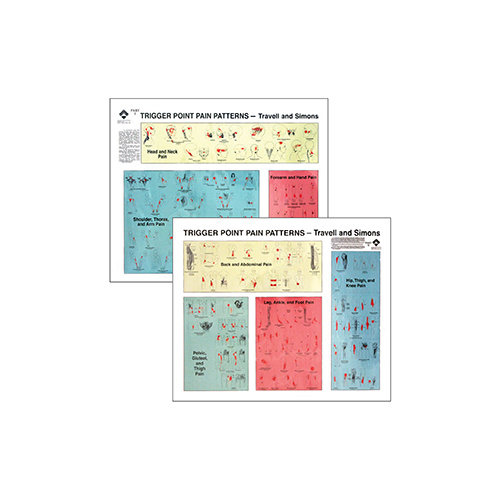

The cross-sectional area of RCP minor was significantly smaller in those with active MTPs compared to those with latent MTPs. Active MTPs were found in 55% of patients and the rest had latent MTPs. A subsequent study was conducted in 11 subjects to evaluate the cross-sectional area of the RCP major and minor with MRI and its relationship with active MTPs in chronic tension-type headache (CTTH) patients ( Fernandez de las Penas et al 2008). Of the ETTH patients, 60% had active MTPs which reproduced their symptoms while the rest had latent MTPs. In one study, 10 patients with ETTH were compared with 10 asymptomatic controls for the presence of sub-occipital MTPs. Clinical investigations demonstrate that MTPs in the sub-occipital muscles may be associated with episodic tension-type headache (ETTH) ( Fernandez de las Penas et al 2006c).

The MTPs in the sub-occipital muscles may refer pain to the occiput and temporal region and cause bilateral headache ( Simons et al 1999). Myofascial trigger points may occur in the mid belly of both RCP major and minor and inferior oblique. All DGSA courses have the Swiss EduQua quality certificate.Kerrie Bolton, Peter Selvaratnam, in Headache, Orofacial Pain and Bruxism, 2009 Trigger point location Our courses are offered worldwide and in several languages. We place an emphasis on a high didactical level and profound knowledge and safety. With decades of clinical practice, teaching experience and continuous scientific research, the international DGSA instructor team passes on these efficient treatment techniques to other physiotherapists and medical doctors worldwide through high qulaity courses.

Travell and simons trigger pain point patterns manual#
Therapists who specialize in Dry Needling and Manual Trigger Point Therapy can be found on the DGSA website by clicking on find a therapist. The objectives of Dry Needling and Manual Trigger Point Therapy are to resolve and enable the sustained relief of muscle pain and contraction as well as to resolve fascia adhesions, which may be contributing factors to back pain, neck pain, shoulder pain, tennis elbow, heel pain and other musculoskeletal and myofascial pain syndromes. It continues to set the relevant standards on this topic. Simons Academy, DGSA® has been one of the pioneers in the development and promotion of Dry Needling and Manual Trigger Point Therapy since 1995. This is referred to as the "Energy Crisis Theory".ĭry Needling and Manual Trigger Point Therapy Courses – A Better Quality of Life for Your Patients If this condition becomes chronic, the muscle may further contract and become painful. These sustained muscle contractions can then lead to poor circulation in that area due to blood vessels being compressed, preventing adequate oxygen supply to the muscle and not allowing it to heal properly. Multiple contractions of this kind in a specific region in the muscle, may form a taut band, that is easily palpable by trained practitioners. This is because calcium triggers muscle fiber contraction.

Any lesion in the sarcoplasmatic reticulum system may lead to excessive release of calcium ions and thus sustained contractions of muscle fibers. One of the functions of the sarcoplasmatic reticulum is to transport and store calcium ions. The sarcoplasmatic reticulum is a membrane system within the muscle fiber. They are triggered for example by muscular overload, such as by an injury or overuse. In detail: Microlesions in the muscle fiber (muscle cell) organ called sarcoplasmatic reticulum occure. Since 1983, thousands of physiotherapists, doctors, chiropractors, massage therapists and other health professionals worldwide have applied trigger point therapy in their practice. It changed the understanding and treatment approach towards chronic pain. This book was a breakthrough in the world of rheumatology, orthopedics and physiotherapy. In 1983, Simons and Travell published their work entitled "Myofascial Pain and Dysfunction - The Trigger Point Manual". Simons, MD (1922-2010) to further explore the realm of trigger points and myofascial pain syndrome. Kennedy, was the first to propose the term myofascial trigger point " in 1942. Janet Travell, MD (1901-1997), an American medical doctor and the personal rheumatologist of US president John F. The most currently acceptable terms are myofascial pain and myofascial trigger points. Many terms have been proposed to describe muscle related pain. The study of muscular pain can be traced to the 15th century.


 0 kommentar(er)
0 kommentar(er)
